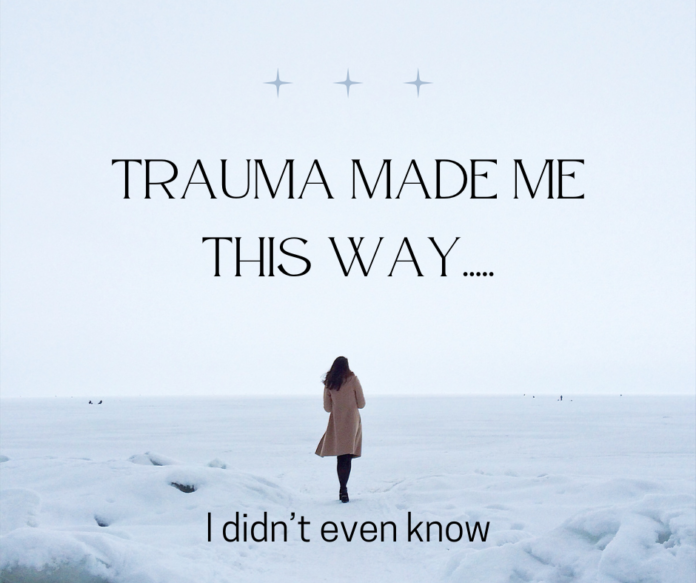…….AND I DIDN’T EVEN KNOW
We don’t always know where it started. We just are the way we are.
Quiet. People-pleasing. Always on edge. A perfectionist. Detached. Or loud, confrontational, always “in control.”
You think, “That’s just my personality.” But what if it’s not?
What if it’s trauma?
What if the things you do every day—the way you love, fear, react, trust, isolate, over-function—aren’t just quirks of who you are, but protective layers built around wounds you never truly addressed?
When Trauma Dresses Like Personality
Let’s say a little girl grows up in a house where her mum is unpredictable—one minute sweet, the next minute yelling, maybe even hitting. No explanation. No comfort.
That child learns to read the room fast. She becomes hyper-aware. She tiptoes. She tries to be “good,” always. She doesn’t speak up. She says sorry even when it’s not her fault.
She grows up and calls herself “easygoing,” “low maintenance,” or “shy.” But what she really became was hypervigilant—wired for safety, not for freedom.
Another child grows up in a home where his father is absent, and his mother is emotionally unavailable, perhaps depressed. No one affirms him. No one tells him he matters.
So he becomes the helper. Always there for others. Always needed. He finds validation in being the one people rely on, because no one was ever really there for him.
He calls it “being dependable,” but truthfully—he’s afraid that without that role, he has no value.
Trauma has a quiet way of weaving itself into our identity until we think it’s just who we are.
Could This Be You?
If you’ve ever said:
– “I don’t like conflict.”
– “I have trust issues.”
– “I hate depending on people.”
– “I always need to be in control.”
– “I never cry.”
– “I always put others first.”
Ask yourself—why?
Who taught you that the only safe place was invisibility?
Who showed you that love must be earned by performance, silence, or sacrifice?
It may not have been one big traumatic event—it could’ve been a thousand little unmet needs.
A thousand small silences.
A thousand moments you were left to figure things out on your own.
And that silent survival mode becomes your identity.
How to Begin to Heal
Healing starts with honesty. It’s not about blaming your parents, your past, or your culture. It’s about telling the truth to yourself.
- Name It
Begin to observe patterns. Where did this behaviour start? Who were you trying to protect, impress, or please? - Feel It
Let yourself feel what you never could back then—anger, sadness, grief, confusion. Those feelings are not weakness; they’re information. - Speak to Your Inner Child
That scared, lonely, hyper-responsible, overlooked child still lives in you. She doesn’t need fixing—she needs love. Reassure her. Tell her the things you needed to hear:
“It wasn’t your fault.”
“You didn’t have to earn love.”
“You are safe now.” - Seek Help
Therapy, counselling, spiritual mentorship—it’s okay to ask for help. There is strength in surrender. There is power in unpacking the past with someone trained to walk you through it. - Create New Narratives
You are allowed to stop overgiving. You are allowed to say no. You are allowed to take up space. You are allowed to trust again. You are allowed to heal and still be tender.
Remember This
You are not “too much.”
You are not “cold.”
You are not “weak.”
You are not “difficult.”
You are human.
You are a soul that adapted to survive. But now that you’re safe, you can learn to live—not just survive.
Healing doesn’t mean your past disappears.
It means it no longer controls your present.
Let’s begin again. Gently. Boldly. Together.
Because you deserve to be whole.
Love,
She Heals
Please comment below. Thank you.


